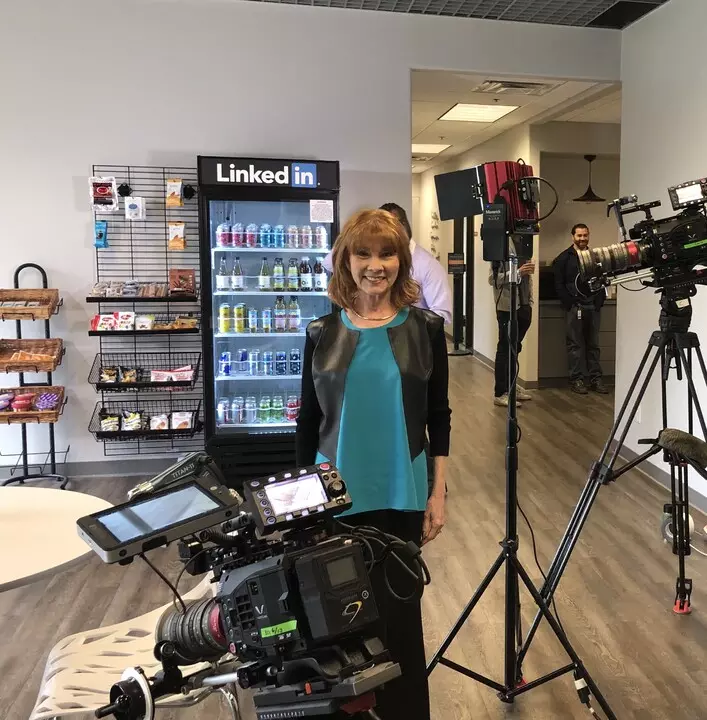Early this year organizations began a full-scale transition from face-to-face gatherings to virtual meetings.
As a result, my speaking and coaching assignments switched from helping leaders project in-person presence to helping them master their presence on Zoom -- both of which required good body language, but in significantly different ways.
Virtual is here to stay, that much we know. However, humans are social creatures, and in-person meetings bring a level of connection and trust that you cannot get from virtual meetings alone.
Welcome to the hybrid future, in which work life will morph into a mix of live and virtual events, and where you’ll need to know which nonverbal cues have the most impact in person and which become paramount when viewed on screen.
There are many situations in which body language plays a significant role in your leadership presence. Five such situations are making a positive first impression, connecting quickly with another person, gesturing to help the audience understand your message, adding impact to a formal presentation, and displaying confidence.
Here’s how effective body language changes, depending on the environment:

1) Making a Positive First Impression
In person you have seven seconds to make an impression.
In any business encounter, first impressions matter. In person it takes seven seconds for people to make judgments about your attitude, level of confidence, professional status, and personal warmth. In a face-to-face situation you have several opportunities to make sure that impression is positive. You can control the physical energy with which you enter the room, the way you carry your body, your initial gestures, the amount of eye contact you make, and even the pitch of your voice as you greet people.
In a virtual environment, you are evaluated even faster.
On a computer screen, it’s only your visual image that sets an initial impression -- and that impression is made very, very quickly. A study at the University of Glasgow’s Centre for Cognitive Neuroimaging that discovered it takes the brain just 200 milliseconds to gather most of the information it needs from a facial expression to determine a person's emotional state. That’s why you can’t wait until you’re in the meeting to “warm up.” You’ve got to appear already expressing the emotions you want to project.
2) Quickly Connecting with Someone
In person, the fastest way to connect is by shaking hands.
Touch is the most primitive and powerful nonverbal cue. In the workplace, physical touch and warmth are established through the handshaking tradition, and this tactile contact makes a lasting and positive impression. A study on handshakes by the Income Center for Trade Shows showed that people are two times more likely to remember you if you shake hands with them. The trade-show researchers also found that people react to those with whom they shake hands by being more open and friendly.
To connect quickly on a virtual platform, start with a smile.
A genuine smile not only stimulates your own sense of well-being, it also tells those around you that you are approachable, cooperative, and trustworthy. In addition, smiling directly influences how other people respond to you. When you smile at someone, they almost always smile in return. And, because facial expressions trigger corresponding feelings, the smile you get back actually changes that person’s emotional state in a positive way.
3) Helping the Audience Understand Your Message
In person you can use an effective variety of gestures.
We may seldom think of our gestures consciously, but in practice we use them with great efficiency and sophistication to clarify a wide range of communication.
Research shows that audiences tend to view people who use a greater variety of gestures in a more favorable light. Studies have found that people who communicate through active gesturing tend to be evaluated as warm, agreeable, and energetic, while those who remain still (or whose gestures seem mechanical or “wooden”) are seen as logical, cold, and analytic.
For gestures to be effective on camera, you need to get framed.
Virtually, you are most effective when you keep your gestures close to your body and within the frame of the camera. Sweeping gestures that continually go out of sight are annoying and counterproductive. Smaller, slower gestures will enhance your credibility and help the audience more easily understand your message. To do this, you’ll need to back away from the camera so we can see your gestures and you aren’t just a talking head. By the way: The more of your body we can see, the more trustworthy you look.
4) Adding Impact to a Formal Presentation
To add impact to an in-person presentation, move then stand still.
Human beings are drawn to movement. If you move when you speak, you’ll get people’s attention. It can be especially effective to move toward the audience before making a key point, and away when you want to signal a break or a change of subject. You can also use space to reinforce your ideas. For example, if you’re presenting three issues, talk about each of them from a different physical position. Or if you have “bad” news and “good” news, you can present each from different sides of the stage or platform. (Just be sure to make your closing remarks while standing on the “good” side.) But don’t move while making a crucial comment. You have the most impact when you combine movement with physical pauses in which you stand absolutely still to highlight your most important points.
To add impact to your virtual presentations, speak then pause.
Because so many of the nonverbal cues we use to assess a speaker are unavailable in a virtual environment (the main reason for “Zoom fatigue”), your audience’s brains have to work harder to understand the full meaning of your remarks. You’ll connect with people even more positively if you wait a few seconds between phrases to let them absorb and analyze what you’ve just said.
5) Displaying Confidence
To look and feel confident when leading a face-to-face team meeting, widen your stance.
Your body helps you become a more confident speaker when it is grounded -- feet planted firmly on the floor, a hips-width apart, with your weight evenly distributed. A broad stance like this builds your confidence by calming your nervous system, allowing you to breathe with ease, and amplifying your voice.
Virtually: To look and feel confident in a virtual meeting, watch your seated posture.
To look more confident on Zoom, sit with good posture - facing the screen with shoulders squared, head straight, and feet flat on the ground. Sitting in this way sends a powerful message. In fact, someone viewing you for the first time will make judgments about your leadership presence based more on your posture than on your actual role or title. A side benefit is that good posture tends to make you feel more self-assured.
It is always smart to update your nonverbal awareness - and now is the perfect time to prepare for body language success in a hybrid future.
You will find more verbal and nonverbal tips to display presence in my book, STAND OUT: How to Build Your Leadership Presence
I look forward to a New Year of speeches, webinars, and one-on-one coaching sessions to continue the work I love: helping executives, entrepreneurs, emerging leaders and sales professionals improve their body language and build their leadership presence! To engage my services, please email Carol@CarolKinseyGoman.com, and for more information, visit https:www.CarolKinseyGoman.com




Leave your comments
Post comment as a guest